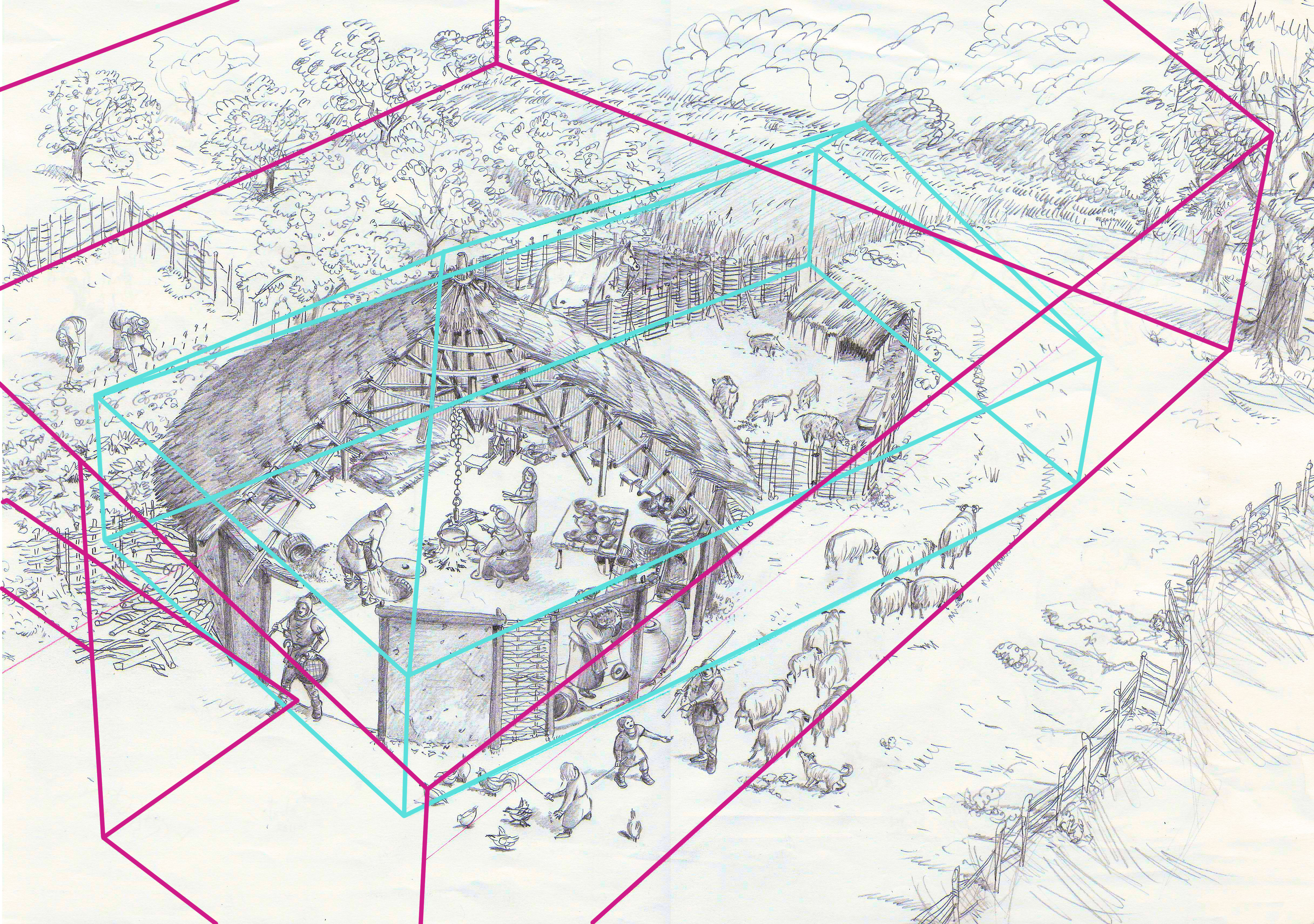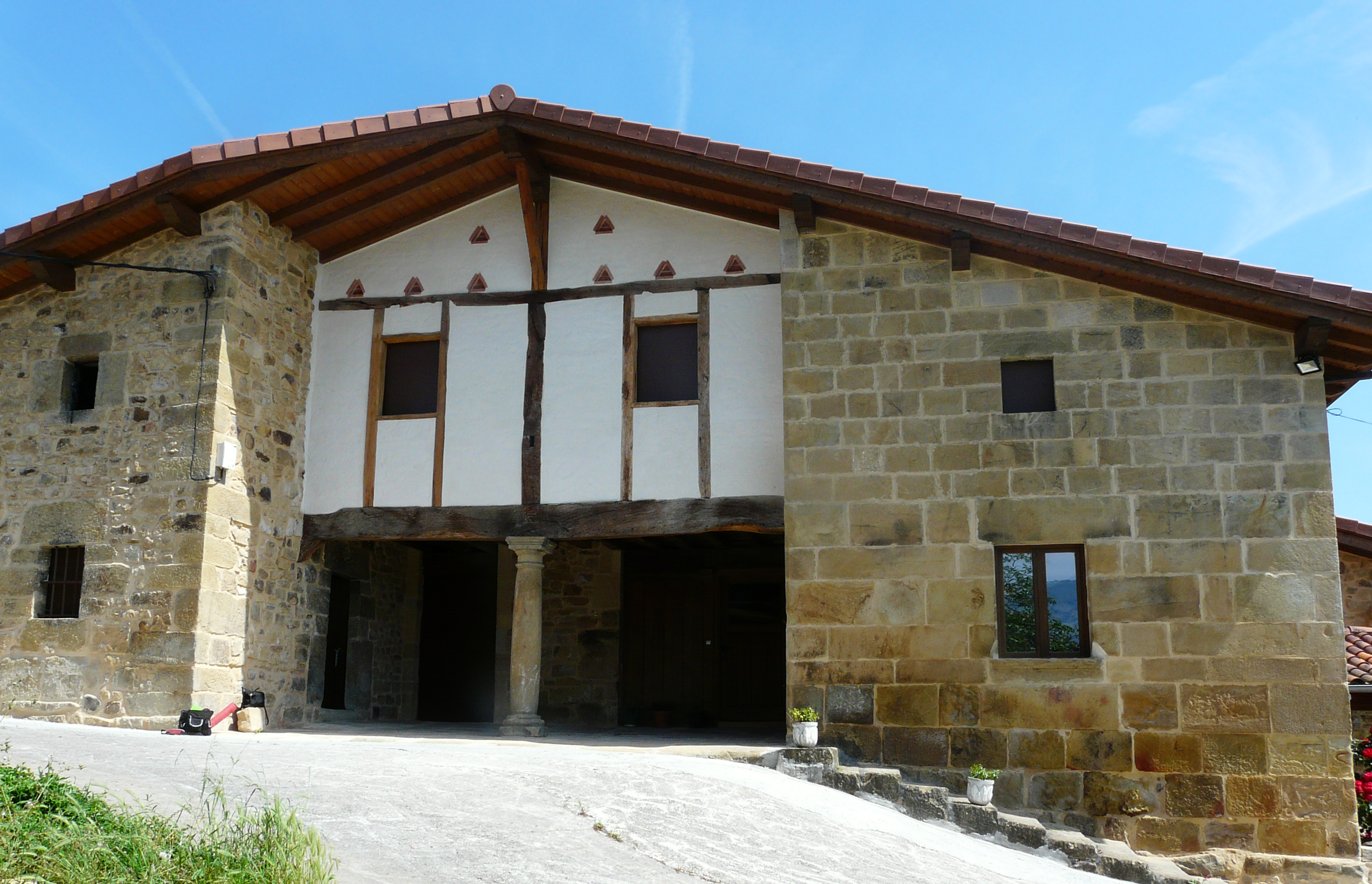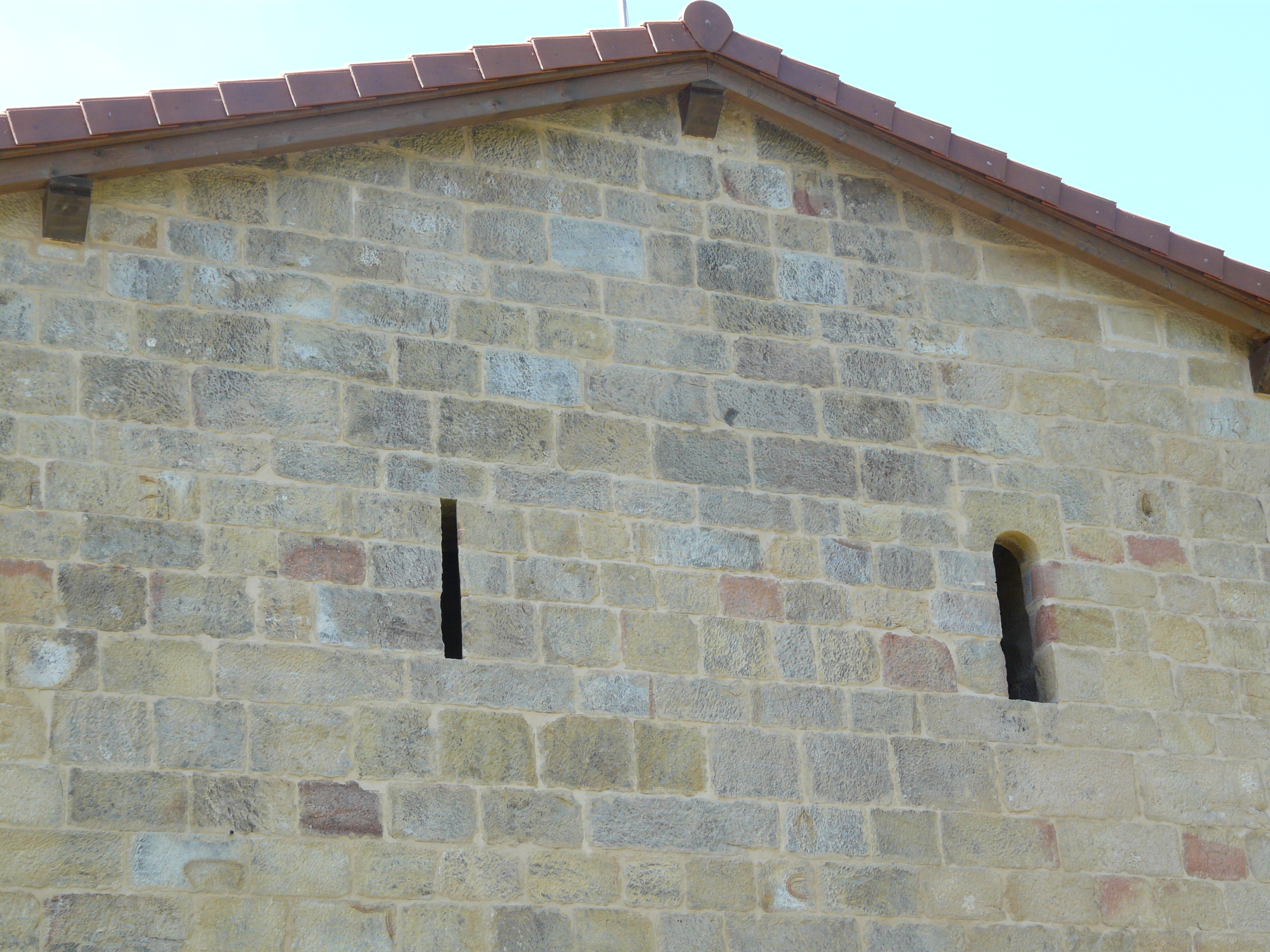Basque ethnography at a glance

Original medieval hut and sketch of later hut (turquoise) and present farmstead (magenta). Drawing by Imanol Larrinaga. Courtesy of Gerediaga Association.
The farmstead is a cornerstone of our landscape, and although we often imagine them in isolation from each other midst farmland, the disposition of houses in the region of Durango, more precisely in Berriz (Bizkaia), indicates organized settlement clusters did occur as early as the Middle Ages. Andikoa is a clear instance of self-sufficient rural neighbourhood.

Besoitaormaetxea Farmstead. Akaitze Kamiruaga. Labayru Fundazioa Photographic Archive.
Nestled in the hills of Mount Oiz, sheltered from exposure to the bitter north wind, and surrounded by fertile soils and large tracts of grazing pastureland, Besoitaormaetxea, a veritable jewel and representative of the Basque farmstead, enjoys an ideal location in the neighbourhood of Sallobente.
Research led by Gakoa Kultura eta Ondarea – Culture and Heritage hand in hand with Gerediaga Association has verified two huts preceded successively the present stone building, circular the earliest and rectangular the latest. According to scientific data obtained from the analysis of pole holes and cereal and charcoal remains found in them, it could be argued the ruins of the said huts, and original foundations of the farmhouse, are hitherto the oldest documented in the Basque Country. These vestiges date from the 11th and 12th centuries.
Besoitaormaetxea encapsulates the history and evolution of production techniques and ways of life, which over the centuries have brought about significant changes in the distribution of the homesteads themselves.

Masonry back wall. Akaitze Kamiruaga. Labayru Fundazioa Photographic Archive.
The first stages of the process are marked by the two medieval huts at a time when farming required a great deal of labour and offered little reward. The beginning of the 16th century saw major agricultural development, resulting in rich and bountiful harvests. The stone farmhouse, whose magnificent masonry back wall gives it its name (hormea is Basque for “wall” and etxea for “house”), is from this period. The wooden press for making cider, which occupied two levels to the rear, as was more common in farmsteads in Gipuzkoa, and the graceful raised granary used to store maize and wheat also date from this time. In the 17th century the main house underwent extensive remodelling and was divided into two dwellings.
During the 18th century the cider press fell out of use and was converted to accommodate farm animals. Subsequent advances in livestock breeding caused life at the farm to change significantly, yet the farming activity continued well into the past 20th century.
All that makes Besoitaormaetxea the prototype of the Basque farmstead.
Akaitze Kamiruaga – Popular Cultural Heritage Department – Labayru Fundazioa
Translated by Jaione Bilbao – Language Department – Labayru Fundazioa
For further information see: Besoitaormaetxea: euskal baserriaren jatorria eta oinarria [Besoitaormaetxea: origin and foundation of the Basque farmstead].

